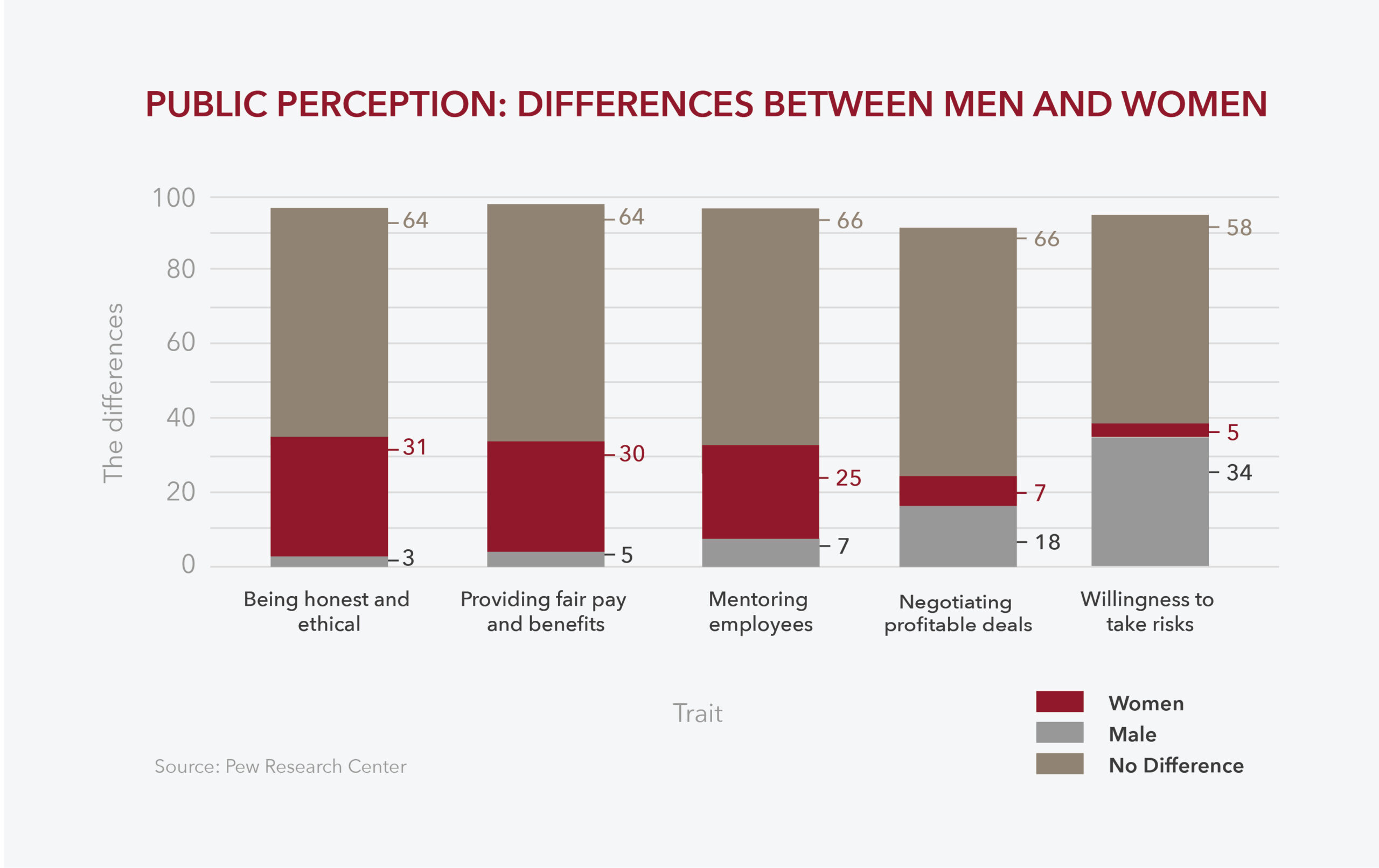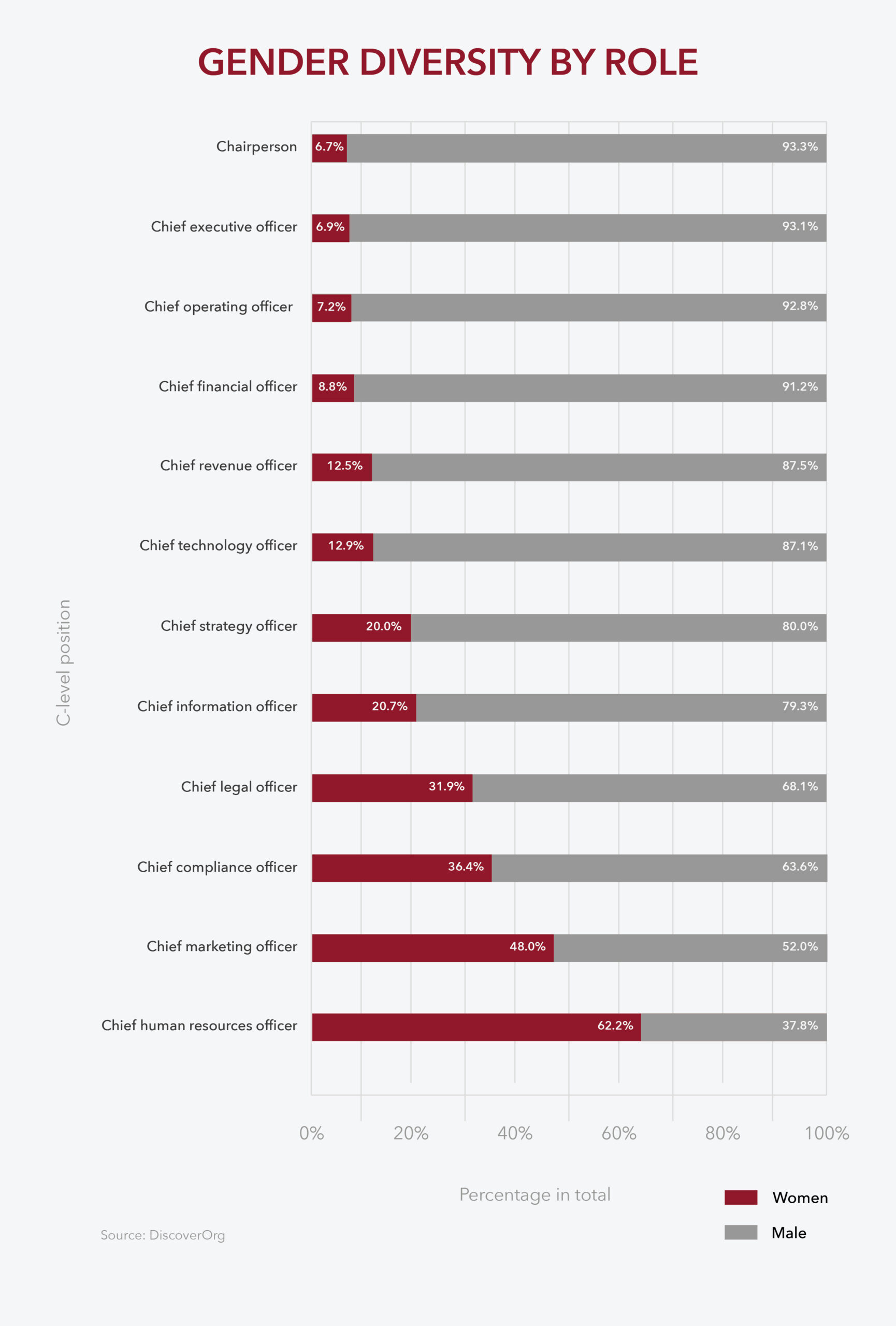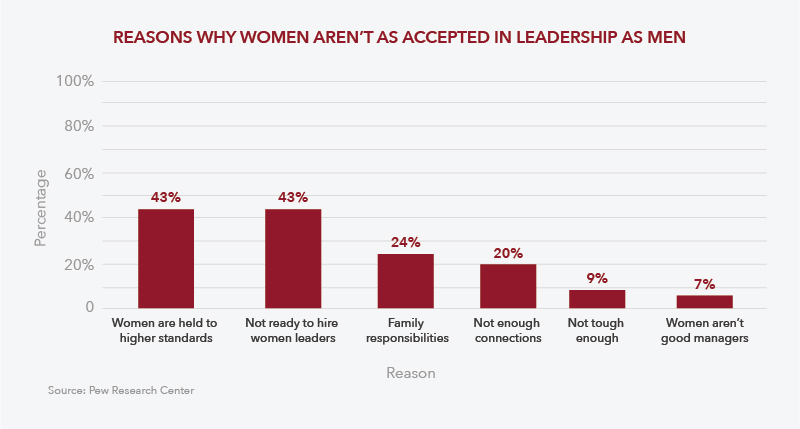Decades after women began entering the U.S. workforce en masse, there is little doubt that women are equally as adept and qualified as men at leading organizations, large and small. Yet, male leaders continue to outnumber women by wide margins in business leadership roles. Last year, DiscoverOrg, a sales analytics company that tracks workplace trends, found that only 18 percent of C-level executives were women. And fewer than 7 percent of Fortune 1000 companies have female CEOs.
Outside big enterprise, the gap isn’t as pronounced but it still exists. The National Women’s Business Council finds that only 36.3 percent of small business owners are women.
Are Traits the Barrier?
In a recent Pew Research Center survey, most respondents said there was no difference between the business leadership traits of men and women. However, some still perceive men and women as having different strengths, with women being better at compromise and men being better at risk-taking.

This research implies while some people don’t see men and women equally in leadership roles, more believe there is really no difference.
So, What is Holding Women Back?
While women and men are both capable of holding the same positions, there are a number of lingering perceptions about women in leadership that are restricting the advancement of women in leadership roles. In the Pew survey, respondents said the following issues are reasons why women haven’t seen as much success as men:
While perceptions are changing, more than half of Americans don’t believe women will ever reach parity with men. Fifty-three percent of Pew survey respondents said men will continue to hold more leadership positions than women in the future.
Florida Tech Associate Professor Lisa Steelman says there are three factors that combine to contribute to the gender disparity in leadership:
1. Society is full of gender-related biases. In general, people believe that characteristics typically associated with women (relationship-oriented, nurturing) are not those associated with successful leaders (assertiveness, decisiveness). Women get placed in what we call a double-bind, because if they act too much like we expect women to act, we don’t believe they can be successful leaders and we hold them back. If they act more like successful leaders, they are no longer conforming to our gender expectations for women, and we don’t like them as much and so hold them back.
2. Institutional and organizational barriers include things like supervisor/organizational support and family friendly policies, maternity leave, the fact that public school days end before the work day ends. As a personal example, I have a 10-year-old son and my husband is in the same field as me, so we can’t attend conferences at the same time. I feel a duty to take care of my son, so I typically don’t attend conferences and workshops much these days. It can be career-limiting to do this when others don’t see you in the game.
3. Personal reasons, including the sense of personal responsibility for family care (see above), and self-confidence. Compared to men, women report significantly lower proficiency in the typical leadership competencies and women won’t apply for leadership positions unless they think they have 100% of the competencies required, whereas men will apply if they think they have 60% of the competencies. So women hold themselves back; we think it is a confidence issue, and this is an area that my research is looking into. We are addressing questions such as what is self-confidence, what does it look like to an observer and how can we help build self-confidence, particularly in women.
Closing the Gap
The American Association for University Women (AAUW), an organization that promotes gender equity through educational efforts, outlines some steps individuals and employers should take to advance women in leadership roles.
Individuals:
- Take leadership training courses in school
- Advocate for equal pay
- Plan for possible career interruptions
- Seek out employers that are committed to gender equity
Employers:
- Offer flexible schedules
- Offer evidence-based diversity training
- Encourage sponsorship and mentorship programs
- Update and improve human resources materials

